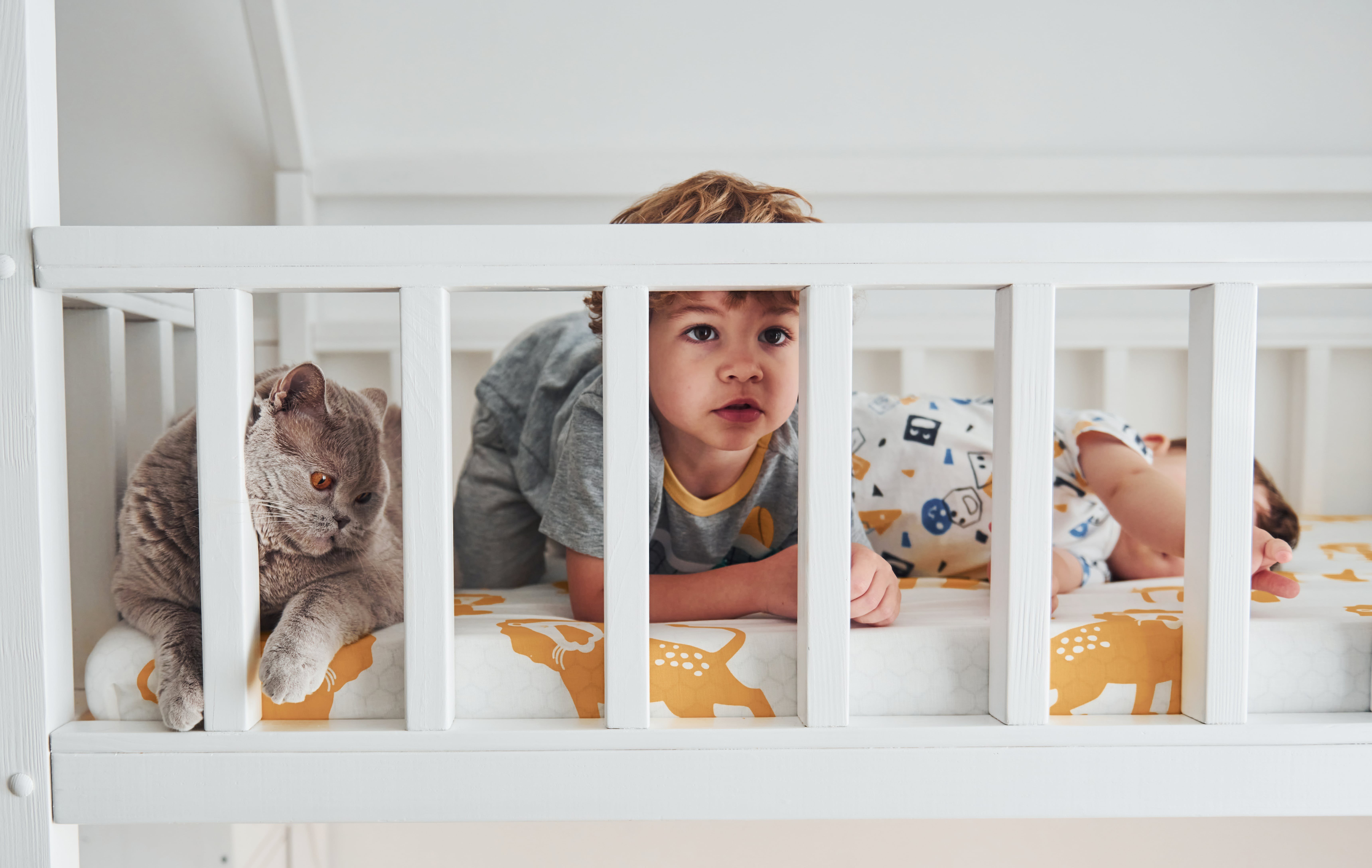Bedside Cosleeper
A bedside cosleeper can be described as a bassinet that connects to the side of your adult bed. If you stick to the CSPC guidelines for sleeping spaces for infants It's safe.

These guidelines are similar to crib bedding standards. You can read more about these guidelines here. The most important features to consider when choosing the best bedside sleeper are Safety as well as comfort and convenience.
Safety
In line with the American Academy of Pediatrics' recommendation that infants sleep in the same bed as their parents, cosleeping (a practice that is also known as bed-sharing) has gained popularity among many expecting and new parents. The Academy notes that room-sharing is safer than sleeping with an infant in the same bed since it decreases the risk of Sudden Unexpected Death in Infants (also known as SIDS). While the AAP discourages bed-sharing but does recommend that co-sleeping be done on a separate sleeping surface to limit the risk of SIDS. This is the reason why the creation of the bedside cosleeper was important to many families.
A bedside sleeper is attached to a bed frame that is suitable for adults. It is an equivalent of a crib-style sleeper. The bedside cosleeper allows parents to monitor the baby, and also gives the baby the ability to sleep in their own bed. The best cosleepers have strict safety standards and are constructed with sturdy, high-quality materials. To ensure the safety of your child, look for the Juvenile Products Manufacturers Association stamp of approval. bedside crib to cot is a sign of rigorous testing and quality control.
The safety of a bedside sleeper is contingent on a variety of factors, including the manner in which it is put up and connected to the parent's bed. It is important that the bedside sleeper be secured to the mattress of the parent in a way that does not create gaps and spaces, where an infant could become trapped. This could result in an entrapment risk. It is crucial that the attachment system used for a bedside sleeper be tested in order to ensure that it can withstand forces that may be applied during use, for example the parent moving on and off the sleeper. horizontal force applied to the attachment system or to the corners of the bedside cosleeper.
The standard for bedside cribs incorporates, as a reference to the federal consumer product safety standards for bassinets (16 CFR part 1218) and performance requirements for fabric-sided closed openings. The standard's mandatory requirements also address the danger of head and neck entrapment by requiring that, after application, and release a 50-lb. horizontal force at the attachment systems and at the corners of the bedside sleeper, an opening that is greater than 1.0 in. is not allowed to be created. ASTM's electronic Reading Room offers read-only versions of the standard.
Convenience
Many parents do not allow cosleeping because they fear the risk of suffocation, or SIDS or because it's a "Ferberization" that forces children to sleep on their own. However, anthropologists have noticed for a long time that many primates, mammals and people from non-Western cultures cosleep often. This is because babies are soothed by hearing the voice of their mother, and may also learn to soothe themselves.
The top bedside sleepers have clever design that can be attached to the side of any bed and can be swiveled for easy access for feedings during the night or diaper changes. Look for one with feet that are adjustable and retract to accommodate various mattress sizes, and a big storage compartment to store all of your baby's needs.
Select a bedside sleeper that fits standard crib bedding to be used in a safe manner as your child grows. You may also want to look into a convertible model that could transform into a play yard or a deeper bassinet to last for years of use, and folds up easily to travel.
Portability
A bedside sleeper with wheels or a base that is lightweight is easier to move than one that has a heavy wooden frame or a substantial base. The babybay Bedside sleeper, HALO BassiNest Essentia and Snoo Smart Sleeper all have great portability features: adjustable feet that retract to accommodate platform beds; legs fold inward to give the most comfortable closeness to the mattress; and 100% mesh sidewalls that allow for air circulation without material covering baby's mouth or nose.
The Arm's Reach ClearVue is an excellent option. It adjusts in 1" increments and can be used as a bassinet or a portable bed. It also rotates, allowing easy access to your baby so you can comfort and nurse her or check on her during the night.
